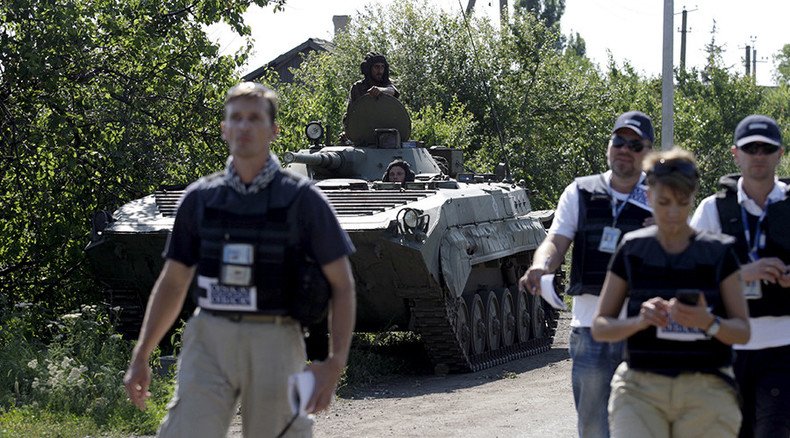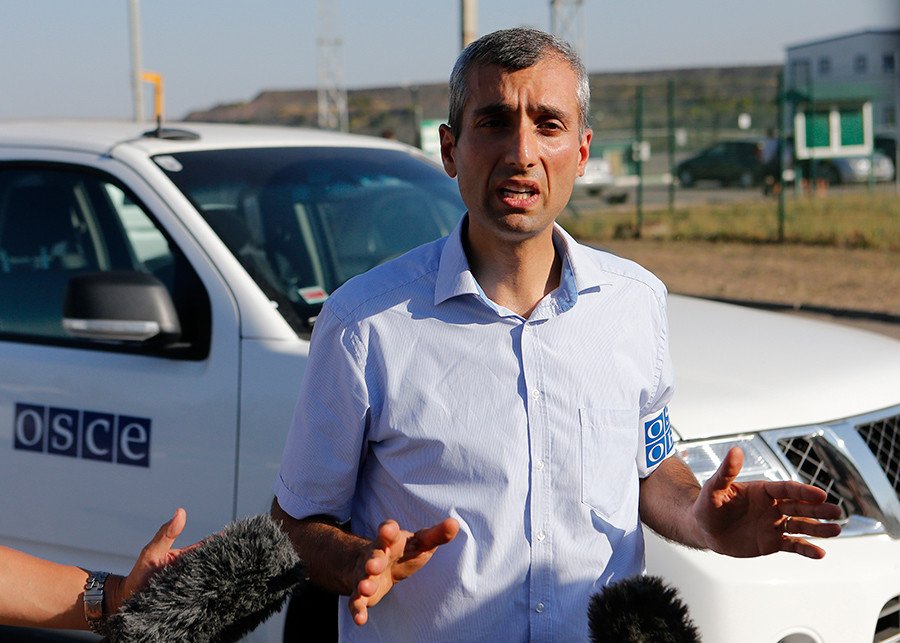OSCE saw no military hardware, weaponry crossing from Russia to Ukraine – mission head

No military hardware, weaponry or people bearing arms have crossed the Russian-Ukrainian border during nearly a year of observations, said Paul Picard, the chief of the OSCE monitoring mission deployed at border crossing points in Donetsk and Gukovo.
“We have not seen any military equipment crossing the Donetsk or Gukovo checkpoints,” Picard said at a press conference in Russia’s southern city of Rostov-on-Don. The Organization for Security and Co-operation in Europe observers have also “never seen people crossing the border with weapons. The border guard and customs strictly watch over this,” he added.
However according to Picard, unarmed people in camouflage clothing, some of them calling themselves “volunteers,” have been crossing the border in both directions on a daily basis. Some of them bore various types of insignia, including those of the self-proclaimed Republics of Donetsk and Lugansk, which have been fighting Ukrainian government forces for over a year.
“From September 1 through August 4, we have observed 21,309 of these types of people crossing the border, that’s 63 per day or 441 per week, of which 94 percent are crossing the Donetsk checkpoint,” the OSCE mission head said in Russian.

In total, according to the OSCE mission head, some 2.9 million people have crossed the Russian-Ukrainian border during the year observation.
“This flow is continuing, but it has become less,” he added.
According to Picard the monitors also witnessed 21 vehicles marked as “cargo 200” or simply “200” passing through Donetsk or Gukovo checkpoints both to and from Ukraine since September 1, 2014. Apparently implying that the cars might have been carrying human remains, the OSCE border mission chief could not confirm the contents of any of the vehicles or show any pictures of such markings.
The monitors also saw 115 aircrafts, including planes, helicopters and drones, flying over and near the checkpoints, but could not confirm any of them actually crossing the border.
READ MORE: Kiev in violation of heavy weaponry clause in E. Ukraine - OSCE
The OSCE monitoring mission is projected to remain at Donetsk and Gukovo checkpoints at least until September 30; its mandate has already been prolonged several times in the past. There are currently 18 monitors from Finland, France, Macedonia, Hungary, Ireland, Moldova, Serbia, Tajikistan and Turkey working on the Russian-Ukrainian border.
The conflict in eastern Ukraine began in April 2014 after Kiev sent its troops to suppress the Donetsk and Lugansk Regions, which refused to recognize the new coup-imposed authorities in the capital. At least 6,832 people were killed and at least 17,087 injured in the fighting in eastern Ukraine, according to UN estimations.











